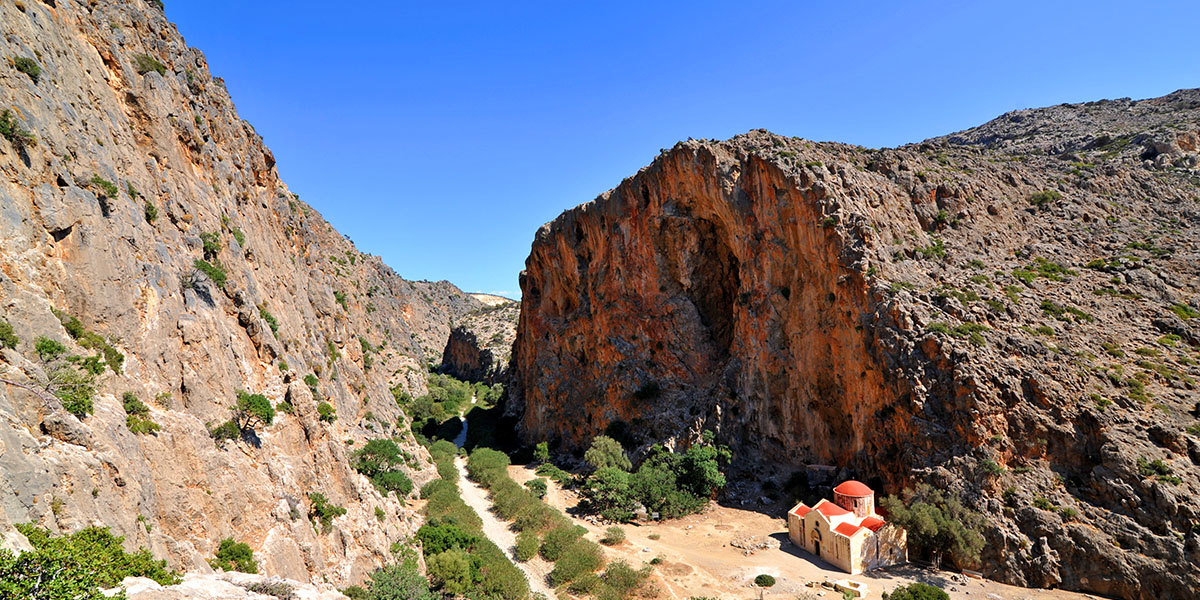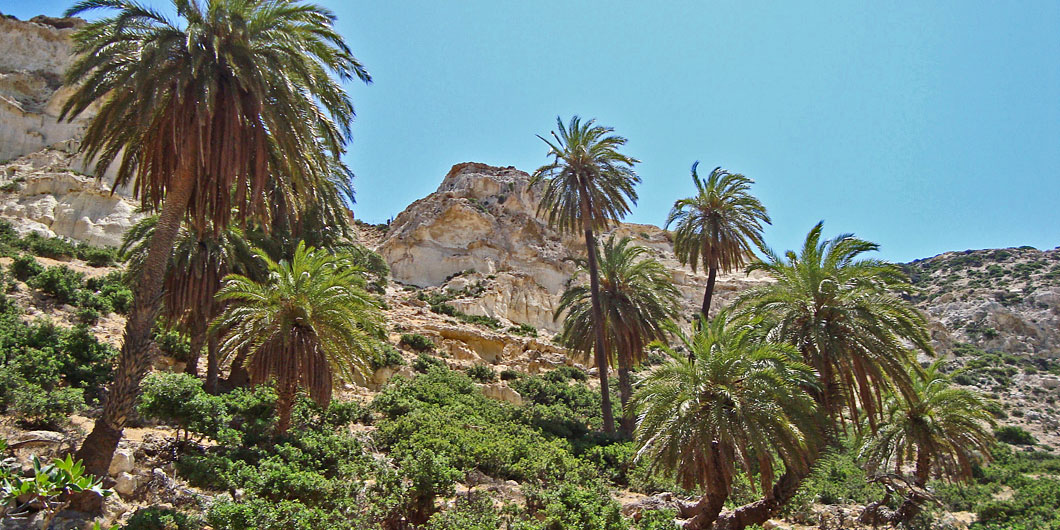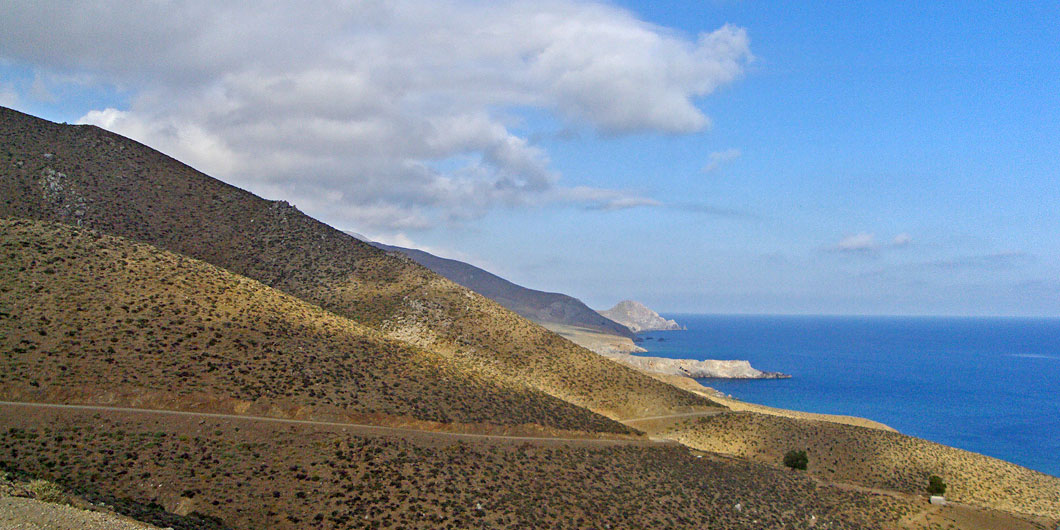This range is the southernmost in Greece: they stretch along the south coastline of the Heraklion prefecture, between the Messara plain at the north, and the Libyan sea to their south.

Their highest peak is Kophinas (1231 m). Even if the range is not particularly high, it is nonetheless characterized by very steep slopes with dramatic drops.
In their geomorphological form, the Asterousia Mountains are denuded, rocky and covered in phrygana (that is plant communities made up of undershrubs – aromatics and thorny species, unpalatable; called garigue elsewhere) and other plants which can withstand the hot and dry climate.
Here are the kingdoms of the raptors and vultures: among them the endangered bearded vulture or Lammergeier (Gypaetus barbatus), the Golden eagle (Aquila chrysaetos), Bonelli’s eagle, the Peregrine falcon and Eleonora’s falcon. Here too lives the endemic ground snail, Albinaria terebra.
The mountain range is of ecological and archaeological importance, and thus has been included in the Natura 2000 protective network. On Kouphonisi is a Minoan peak sanctuary, and at Lebena (old Leben) is the well-known Asclepeion.

Perhaps the most characteristic feature of the Asterousia are the caves and gorges. Gorges such as Aghiofarango, Martsalo, Trypiti end up at the Libyan sea, making striking beach fronts.
The Asterousia are a much loved destination for the rock-climbing fraternity. There are trails for this at Kapetaniana, and also in the Aghiofarango. The monasteries of the region are important too: Odigitria, Koudouma, Apezanoi and Aghios Nikitas.

As for the settlements, amongst the most picturesque are Kapetaniana, west of Kophinas with its restored houses and a view from on high over the Libyan sea, as well as Ethia, southeast of Rotasi with its typical Cretan architecture.




